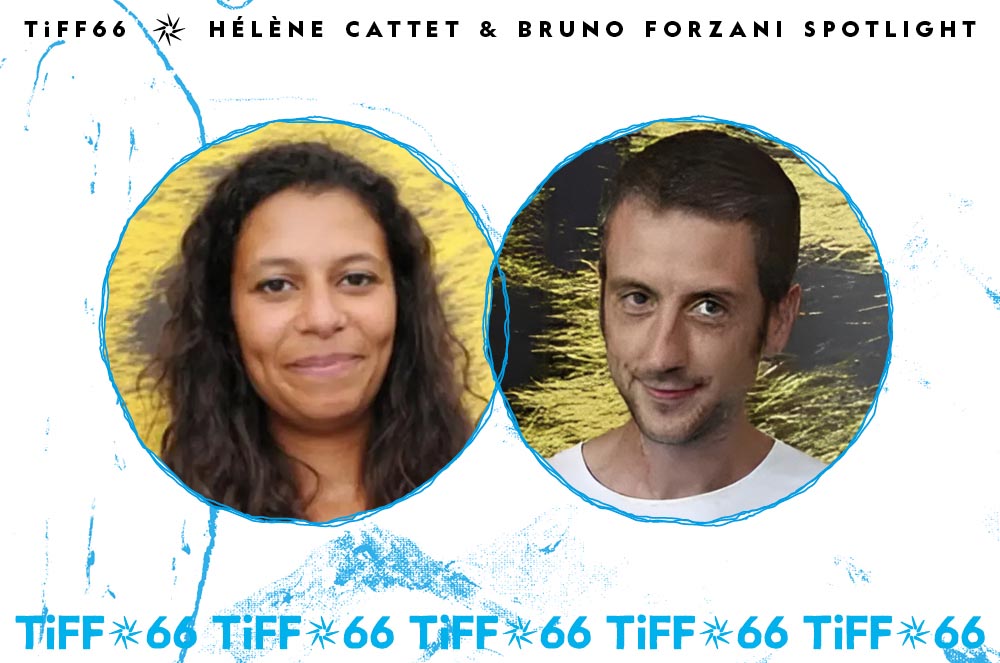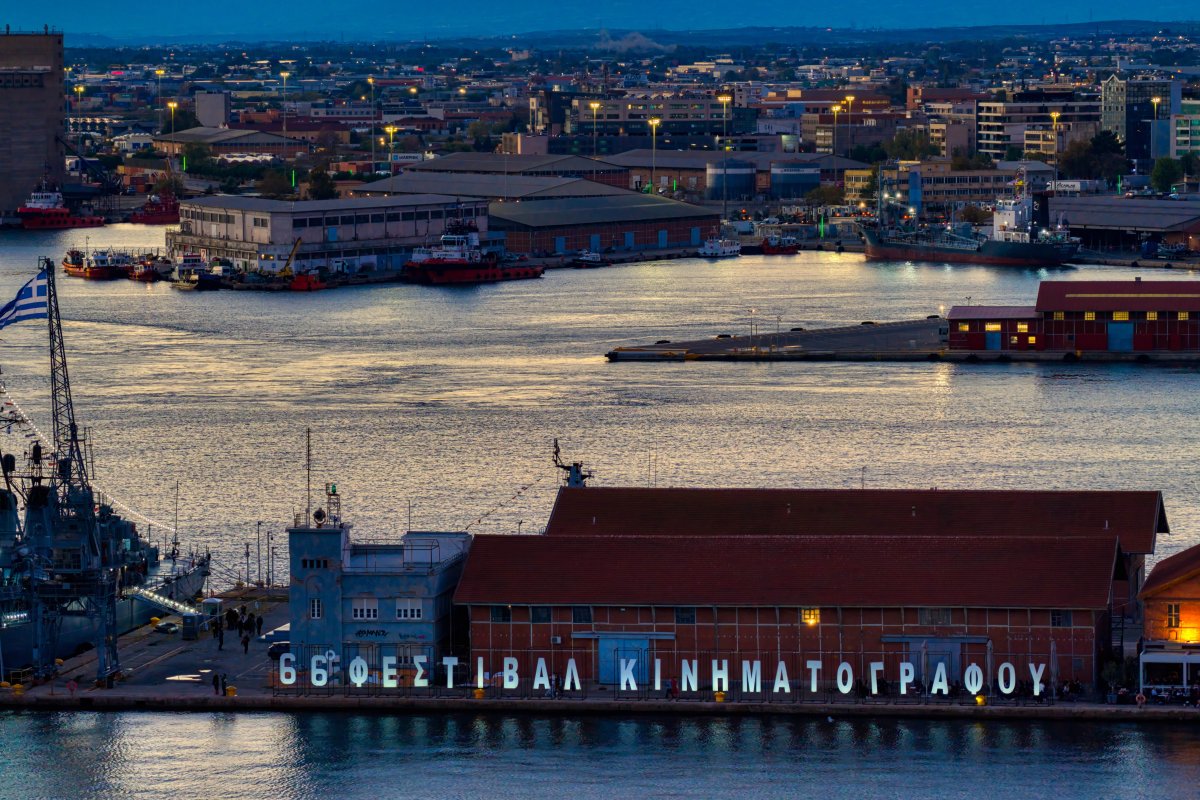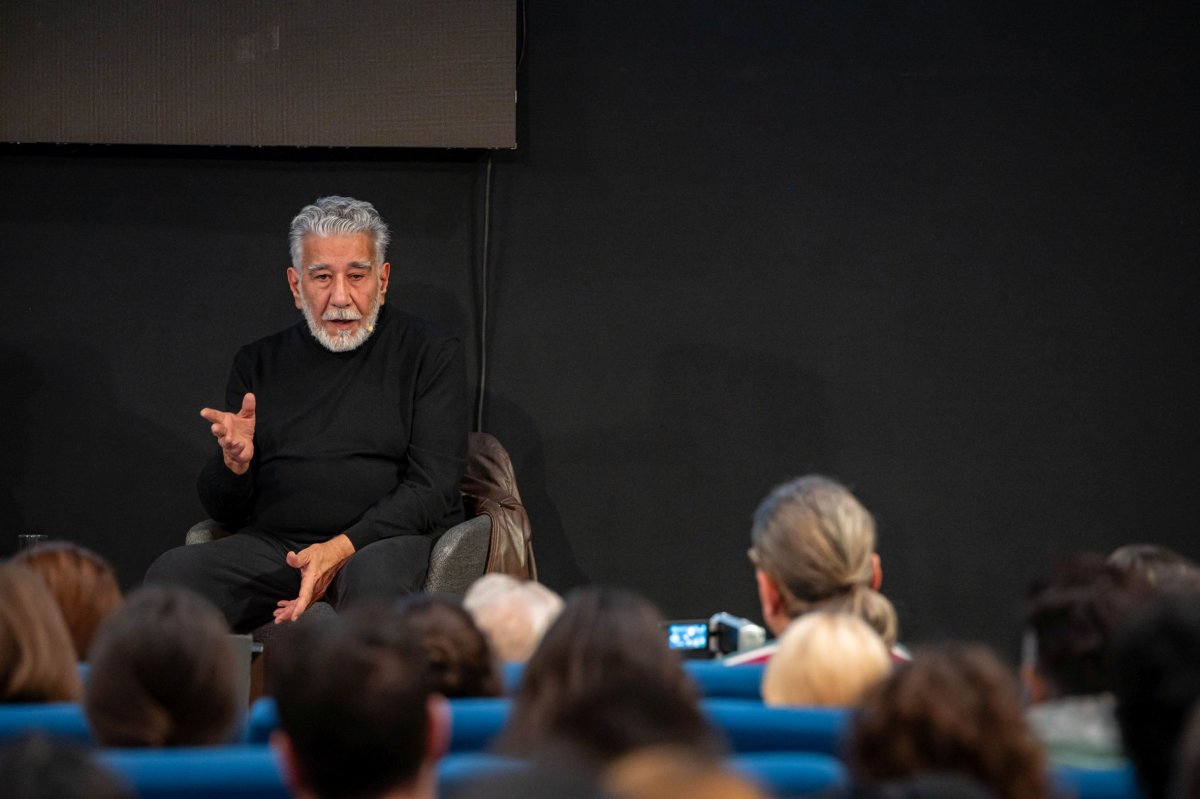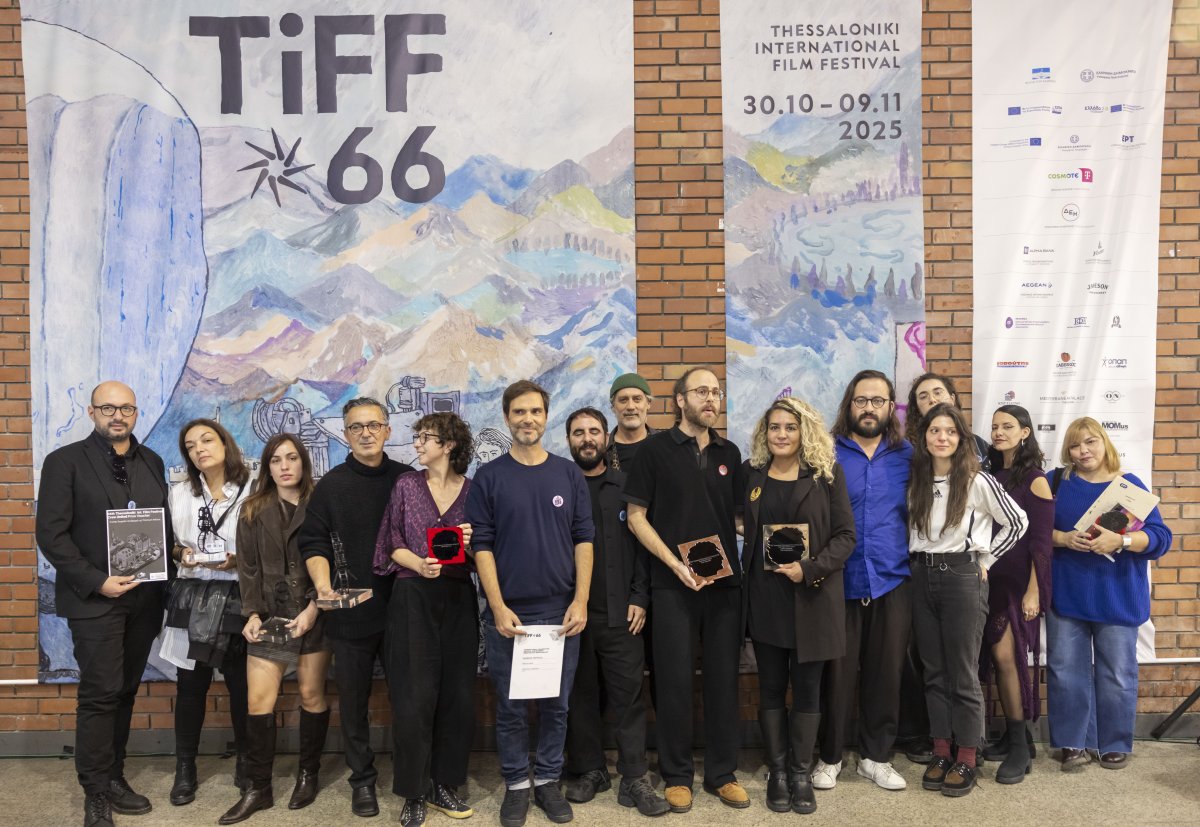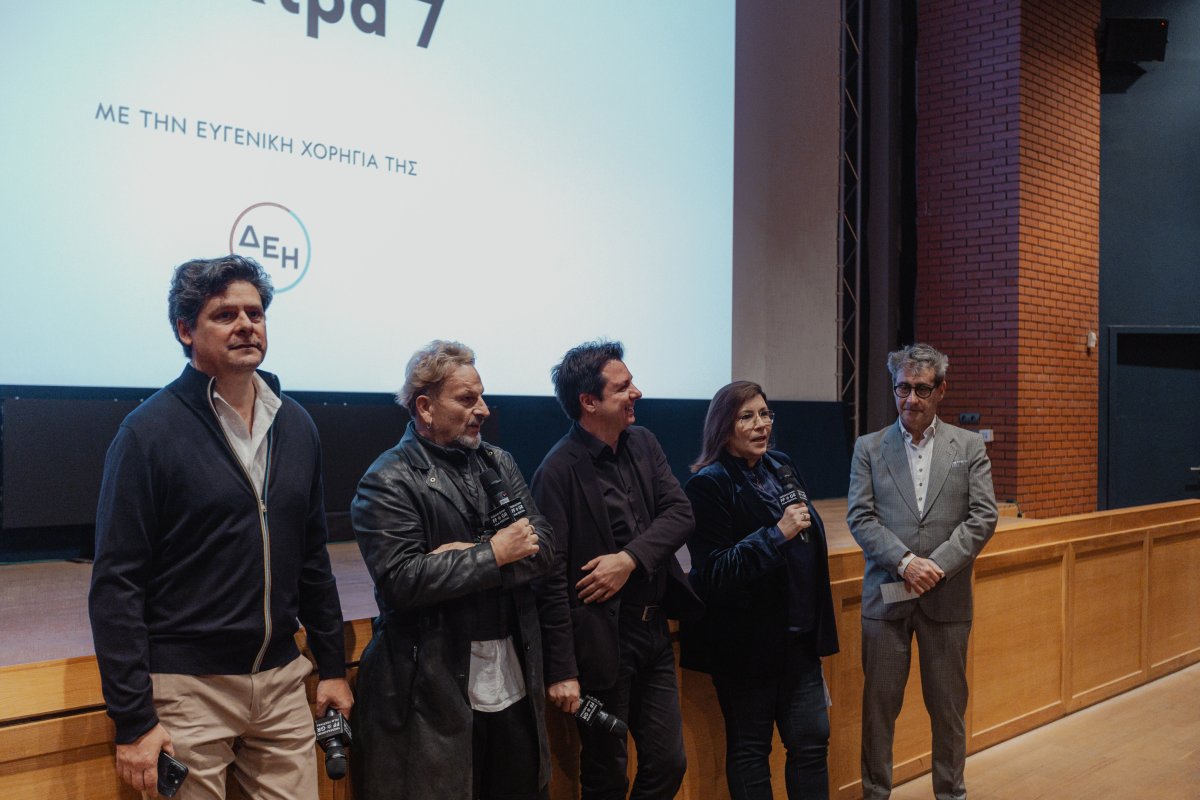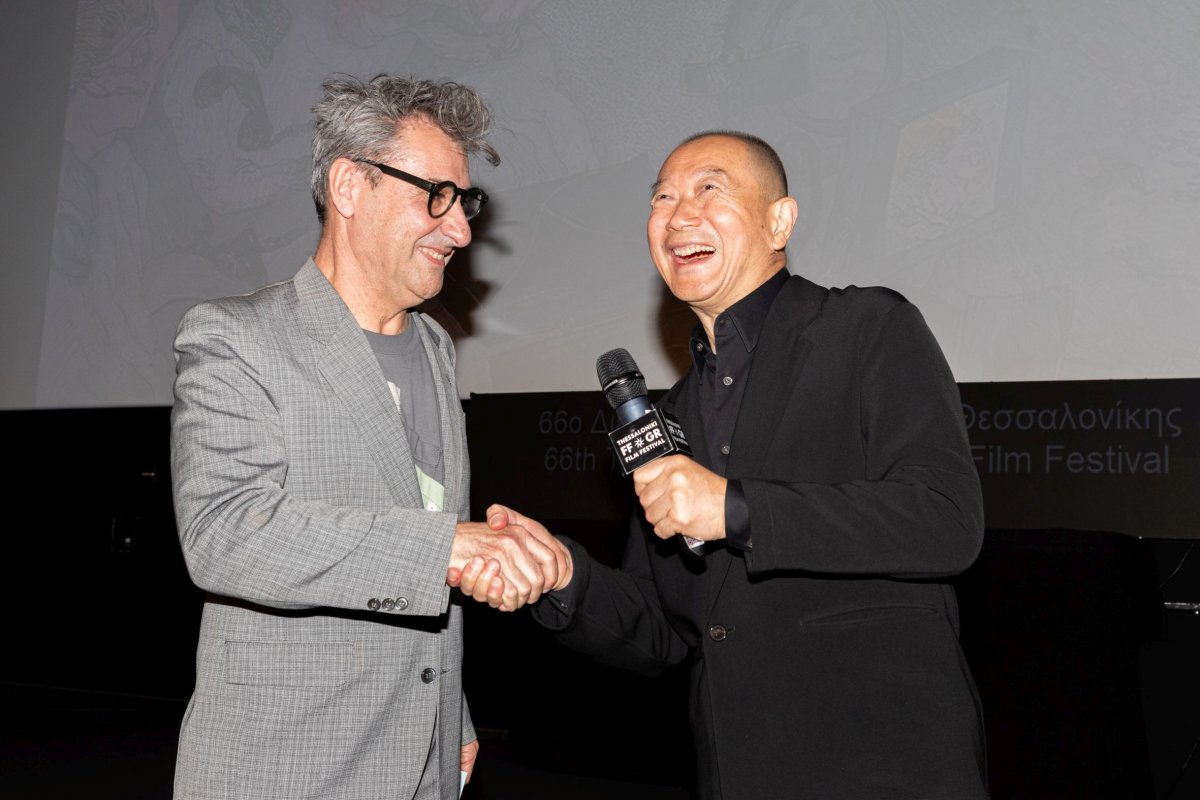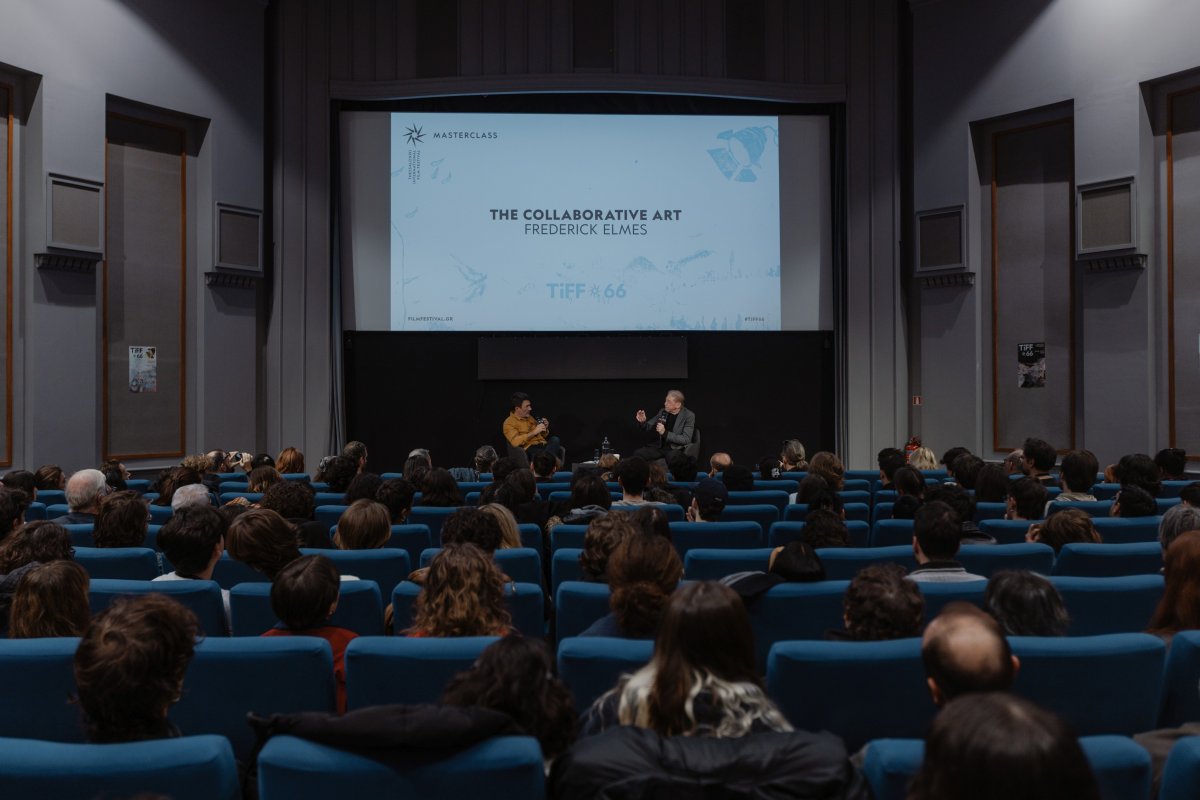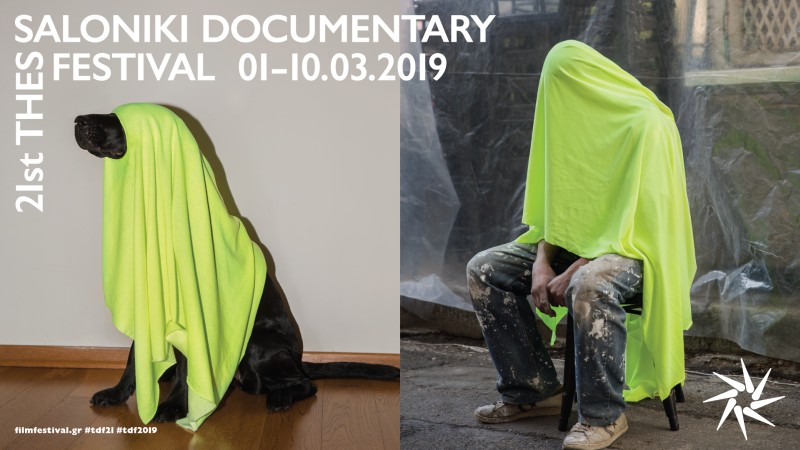The 66th TIFF will host a tribute to one of Europe’s boldest and most distinctive directorial duos, Hélène Cattet & Bruno Forzani, showcasing their pluralistic and unconventional body of work. The audience will have the chance to watch their entire full-length filmography, from their first experimental short films to their most recent feature.
In the late 90s, the pair found themselves in a small community of devoted cinephiles in Brussels. Their shared love of Italian giallo, pulp fiction, and European genre cinema of the 60s and 70s defined both their collaboration and their shared artistic language.
Over the course of their collaborative journey, Hélène Cattet and Bruno Forzani have directed a number of short films – almost exclusively self-produced –, while their two first feature films, Amer (2009) and The Strange Colour of Your Body’s Tears (2013) constitute a feminine/masculine diptych on desire. They were also among the 26 directors from around the world contributing to the anthology feature ABCs of Death (2012) with their highly erotic segment O Is for Orgasm. In 2017 they directed their third feature entitled Let the Corpses Tan, based on the novel with the same title by cult authors Jean-Patrick Manchette and Jean-Pierre Bastid. Their fourth feature film, Reflection in a Dead Diamond, their most narratively accessible film to date, premiered at the Berlin International Film Festival. With this film, Cattet and Forzani add yet another genre – Eurospy, a homage to European spy films with a touch of gore and giallo elements – to the magma of hybrids they present.
From the outset, the collaboration between Cattet and Forzani was grounded on the idea that cinema addresses not only the mind, but also the body and instinct. They were not merely imitators of the genre, nor of the works of Mario Bava, Dario Argento, Lucio Fulci, and Umberto Lenzi. From their very first shorts, they sought new ways of expression, blending the sensual gaze with intense sound design, oversaturated colors, and jerky editing, like laboratory materials. And so, in this slightly strange but conscious way, they developed a new cinematic language which played a decisive role in their career. What impressed the audience, however, which was faced with something at one strangely familiar and completely new, was the feeling of cohesion their films exude, a body of work which does not seem to bear the signature of a single creator. It was the vision of two directors who purposefully blur the lines between themselves, giving rise, in the process, to a third, collective voice.
Their uninterrupted collaboration is also a rare phenomenon, one that makes both themselves and their work unique. In the history of cinema, we find several pairs of siblings, mostly men (Dardenne, Coen, Safdie, among others), who collaborate as directors but often eventually part ways or pursue individual projects alongside their joint work. Cattet and Forzani, an unrelated man-and-woman duo, working in remarkable balance, co-directing and presenting their narratives exclusively as a pair, are an exception to the rule.
In the stories of Cattet and Forzani, the plot is not the main focus. Rather than dialogues and continuous flow, in their narrative they choose to draw the audience into a vortex where the senses are in control. Eccentric and intense, their films offer a fresh take on giallo and pulp, frequently sparking divided opinions among viewers.
Let’s take a glance at the films of the 66th TIFF’s tribute to Hélène Cattet and Bruno Forzani:
In just three minutes, in their first short film Catharsis (2000), Cattet and Forzani construct a bizarre rite of passage at the edges of reality, inviting us to step inside the foyer (or better yet, the darkroom) of their own cinematic universe. In a dimly lit basement, a man comes face-to-face with his own dead body. Thus unfolds a surreal nocturnal reverie within the labyrinth of desire, inspired by Italian giallo thrillers. Time fractures, space becomes impassable, psychosexual tensions intensify the underlying unease, and images culminate in a crescendo… A ritual of cinematic liberation, where the shattering of the visual turns into an act of catharsis.
In eight minutes, and without a single line of dialogue, what begins as a love story transforms into an erotic illusion “tinged with yellow” – after all, we are in the world of a giallo film, the Italian term for “yellow” – where desire becomes dangerous and passion is refracted through a kaleidoscopic light. In Yellow Room (2002), saturated colors, fetishistic textures, and erratic editing dissolve the narrative into sheer sensuality. Here, the menacing black-clad figure in leather, who would later reappear in The Strange Portrait of the Glass Lady, is a recurring emblem of the duo’s universe: a symbol of erotic obsession and violent allure. A bold statement of the delirious style that would come to define their later films.
The ten-minute The End of Our Love (2003) is one of the first examples of the cinematic style that Cattet and Forzani developed further in their subsequent works, prioritizing intense sensuality and a dreamlike atmosphere over a coherent plot. In the film, fragments of memory swirl in a sad, carnal mosaic of lost passion. Pieces of memories restore what is left of a love, as dreamlike images full of color evoke sensuality and decay. The film unfolds as a visual poem, without dialogue, haunted by the ghosts of intimacy and its cruel absence.
Can you get goosebumps in just six minutes? That’s how long it took for this dark, wordless story, which here condenses a tribute to Italian giallo thrillers into a dazzling miniature of death and desire. The plot is summed up in a single phrase: “the last iridescences of a glass lady... murder as a performance.” A sensory spectacle that masterfully orchestrates the ritual of violence and the fragments of a woman’s body, with luminous reflections. Each frame seems sculpted from glass – fragile yet razor-sharp. The Strange Portrait of the Glass Lady (2004) is an exploration of how cinema can transform beauty into menace and murder into choreography. At the same time, a prelude (or an hors d’oeuvre) to the visual delirium and fetishistic details that would characterize the duo’s later films.
The directorial debut that put the exceedingly talented creative duo from Belgium on the map is a mystical, unholy, yet at the same time sanctified triptych about the body and desire, circling through three defining phases in a woman’s life: childhood, adolescence, and adulthood. Set against the backdrop of a villa on the precipice over the French Riviera, in Amer (2009) we get lost in a psychedelic kaleidoscope of colors and extreme close-ups, in the gray zone between reality and fantasy, as the creaking staircase, the dripping faucet, and the buzzing insects flying over a corpse compose a soundtrack straight out of nightmares. An orgasmic trip that sweeps us along a series of minor (and major) “little” deaths, and simultaneously pays homage to giallo – the “yellow” horror films that haunted Italian cinema in the 1970s, with the genre’s quintessential representatives being Dario Argento and Mario Bava. The two, along with Sigmund Freud and Luis Buñuel, grin at us sardonically from the depths of our dreams.
How deep can female pleasure go? Does female desire have a soundtrack? What colors and shapes define a money shot when a female body is the one reaching a climax? A part of the collective project The ABCs of Death, this magical fragment entitled O is for Orgasm (2012) encapsulates all the patterns in Cattet and Forzani’s filmography, teaching us the alphabet of pleasure, even when words escape us.
With The Strange Color of Your Body’s Tears (2013), the Belgian duo drive their obsession with the Italian giallo genre to an astounding, nightmarish extreme. The film begins with a simple premise: a man returns home to find out his wife has disappeared. As he seeks answers, he gets drawn into a labyrinth of amorous hallucinations, violent outbursts, and fragmentary recollections, where truth and delirium become muddled beyond all limits. But this is not a whodunit. Here, walls bleed, shadows whisper, and every sound cuts through like a knife. The dizzying montage and the kaleidoscope of colors overwhelm the senses in this simultaneously beautiful, terrifying, and unforgettable dive into the subconscious.
Santos Palace (2016) takes us to the titular coffee shop in Belgium, where a waitress serves a strange client. Their eyes meet, minutes pass, and we seem to witness a love story that has not begun, or perhaps has already started, with its potential jealousies and passions, or maybe one that will never happen at all; a different kind of romance. The feeling of seeing or being seen, the rhythmical editing, the use of CinemaScope to render objects and spaces as abstract forms, the predominance of detailed shots: these are all obsessions, forms, and audiovisual ideas that explode in this astonishing film. Drawing on surrealist art and avant-garde cinema, using vivid colors, eerie sound design, and unsettling imagery to create a dreamlike atmosphere that is at once captivating and disquieting, this slow-burning series of eerie tableaux immerses viewers in a haunting, hypnotic world, meaningfully winking at all film buffs: “This is, excuse me, a damn fine cup of coffee!”
Sprinkling golden dust over a delightful carnage and mixing blood with sunblock in the light blue desert of Corsica, this exhilarating horror western (shot on the fly, with natural lighting) entitled Let the Corpses Tan (2017), invites us on a tour of the typical Mediterranean summer: the crystal-blue waters, the scorching sun… and the 250 kg of gold stolen by Rino and his gang! The thieves have found the perfect hideout: a deserted and isolated village where an artist seeking inspiration currently resides. Unfortunately, some unwelcome visitors and two police officers throw a wrench into their plans: and their heaven on earth, the place where wild parties and orgies took place, turns into a gruesome battlefield.
The last film by Belgian duo Hélène Cattet and Bruno Forzani is most assuredly a cinematic gem – a delirious visual experience that captivates with both the spectacle it offers and its style, drawing inspiration from the universe of James Bond, Quentin Tarantino, and David Lynch. In Reflection in a Dead Diamond (2025), John D, a 70-year-old ex-spy settled in a luxurious hotel on Côte d’Azur, has his quiet life of retirement disrupted when his bewitching neighbor disappears. Haunted by memories – or perhaps by frenzied imaginings of espionage, diamonds, and femme fatales from the 1960s – John’s reality implodes in a kaleidoscope of feverish dreams. The film pays homage to European spy movies, tinged with thrilling gore and influences from the giallo genre that the duo Cattet and Forzani so dearly love. In Reflection in a Dead Diamond, cinematic extravagance is presented as an immersive sensory feast, featuring a luxurious production design, impressive costumes, explosive close-ups, and reeling match cuts.


